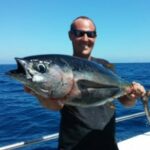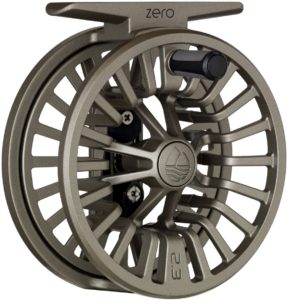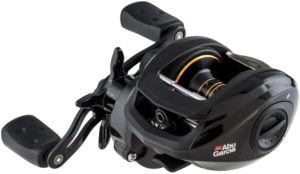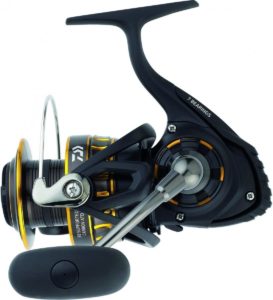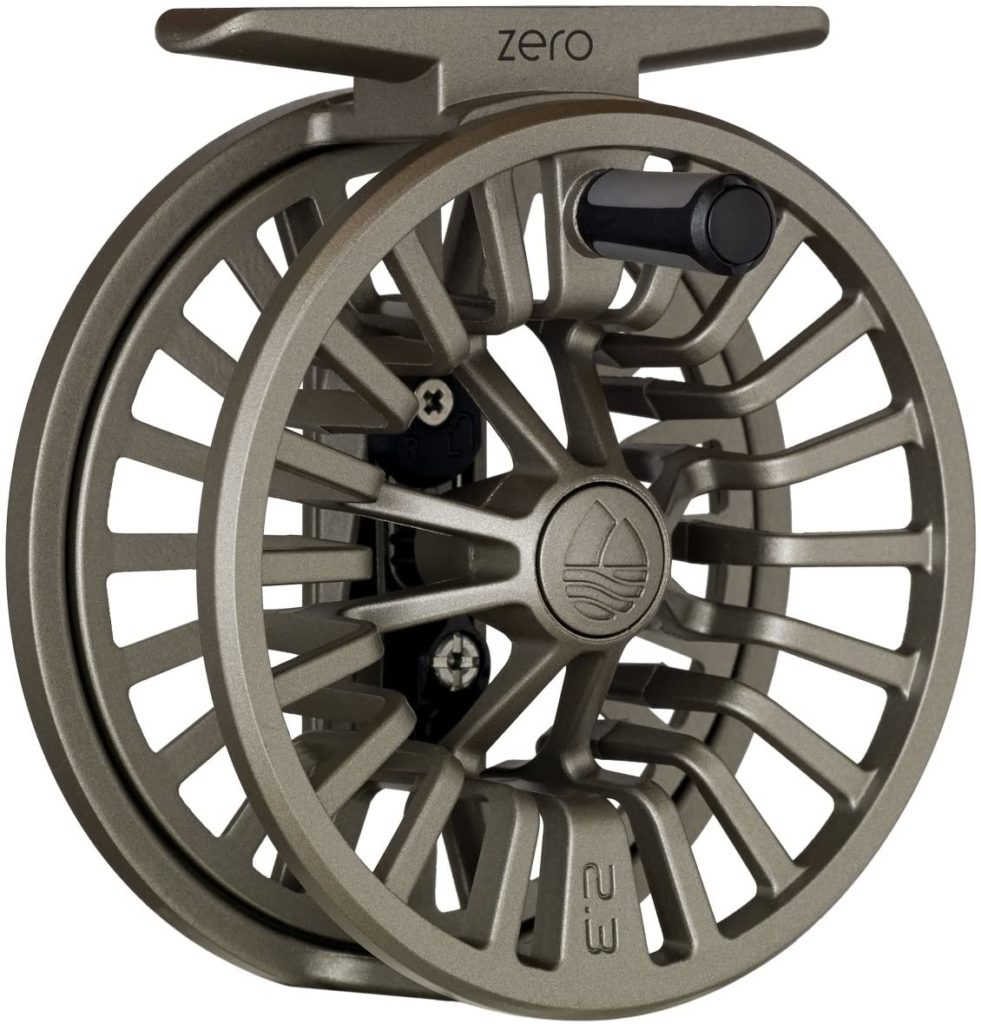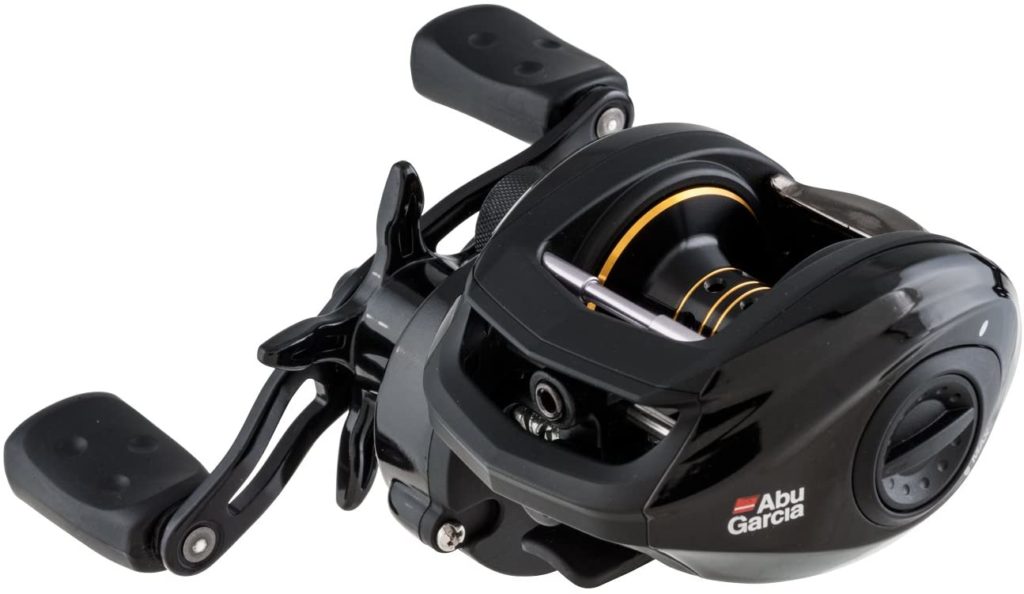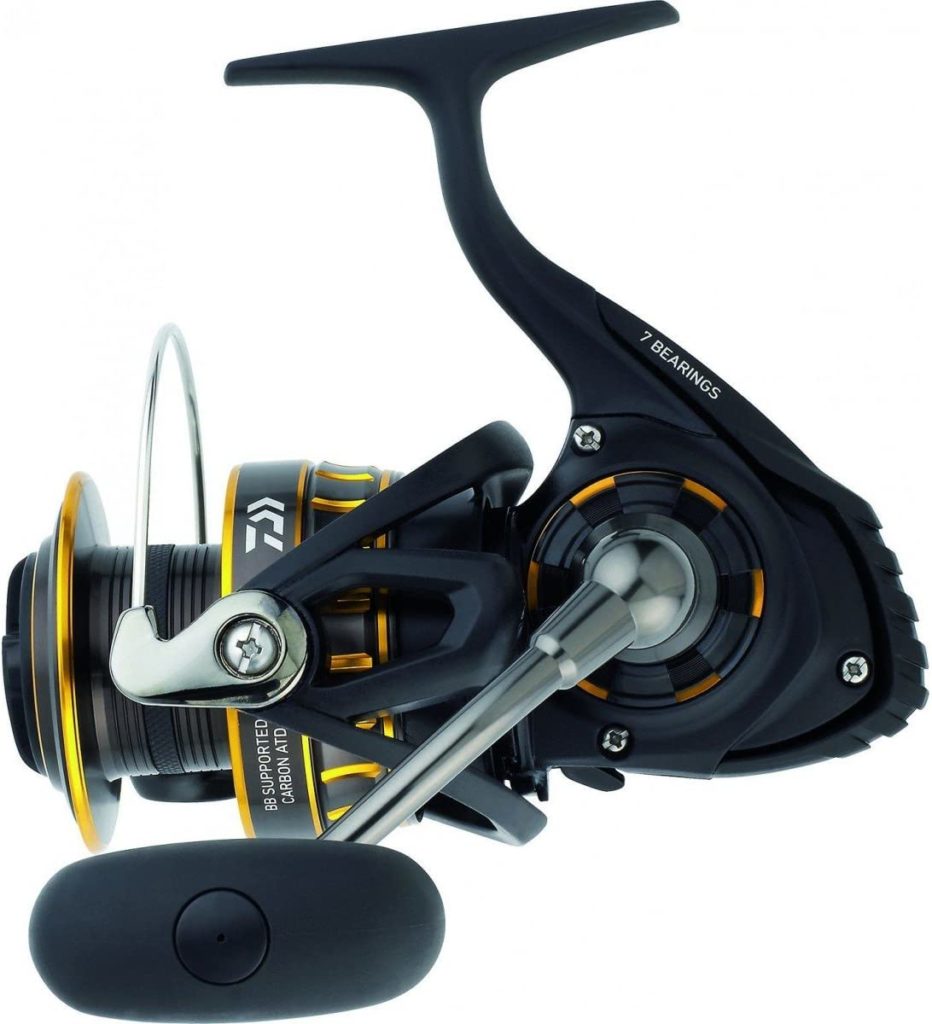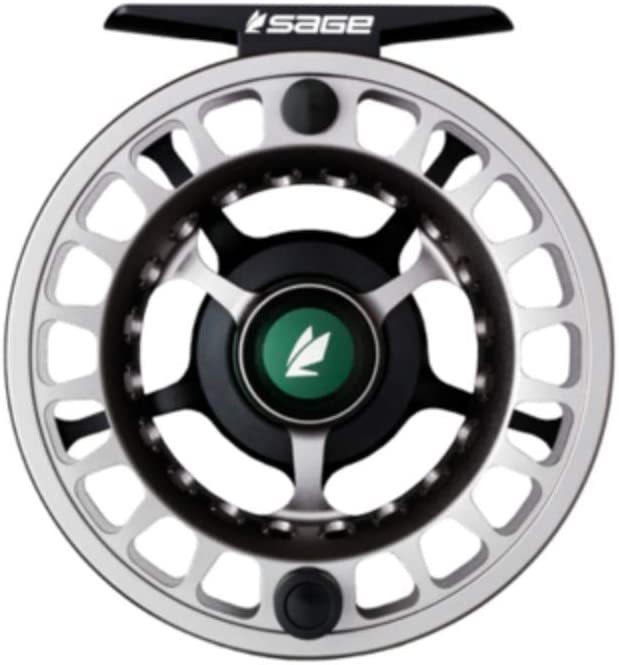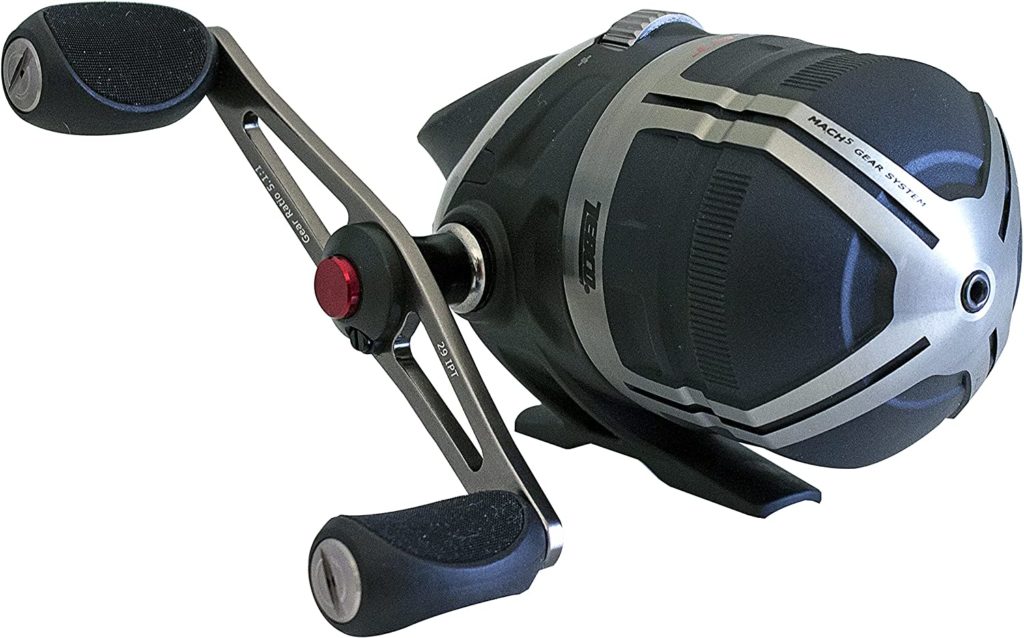An old saying goes, “A fishing rod is a hook at one end and a fool at the other.” As this quote points out, it’s no secret that the rod is the backbone of fishing. It’s what you hold, feel and mostly think about when it comes to catching fish.
Now, I’m not one to agree that we’re all fools at the other end of the rod, though standing by apparently empty water often makes me feel like one. I am, however, here to tell you that if you, like that quote, miss out on one of the more critical aspects of your setup, you’re getting close.
See, the simple quote has the rod accounted for and the hook, but there are a couple of things between those two not covered. Of course, if you’re reading this, you probably already know that’s the line and one of the most important fishing tools you have, the reel.
I can’t say ALL, but I can say without a doubt that MOST big fish landed, have been landed with the aid of a reel, and a quality one at that. See, the reel holds the line and lets you fish farther and deeper than you ever thought possible. And in the event you hook the big one, the reel lets you “put the fish on something,” as any fly angler will tell you.
If the rod is the gun you are peering down, the reel and the line it’s attached to are the magazine and bullet; the tether anchoring you to your target.
Best for rivers
Reddington's ZERO Fly is an American Made lightest in its class fly reel for the angler who knows what they want and wants the best at an affordable price. Offered in multiple colors and a 2/3 or 4/5 setup, this large arbor reel promises to retrieve line quickly off the water and keep you feeling good cast after cast.
Check Today's PriceThe Reddington Zero is an American Made click style reel perfect for your local stream or river. Although the lightest in its class, Reddington has designed this reel with a large arbor, offering ease of use, all-day casting ability, quick line pick up, and reduces line memory.
This reel also comes with a quick change spool, ensuring it’s easily converted from left to right-handed if your buddy wants to give it a try.
Keep in mind when purchasing this reel that it’s a click-pawl drag system. You’ll be able to put most of this fish in its range on the reel with no problems, but it may take a bit of getting used to.
Best for Lakes
The Abu Garcia Pro Max baitcast reel is a smooth as butter, 7+1 bearing baitcaster with a machined double anodized aluminum spool, brass gears, and a compact handle that will keep you slapping banks all day. This reel is tough as nails, adaptable to all skill levels, and performs when you need it most.
Check Today's PriceThe nature of a casting reel makes the purchase of a quality one a nail-biting experience for even veteran anglers. Abu Garcia is here to put your mind at ease with the Pro Max, a smooth casting, durable, and easy-to-use baitcaster.
The Pro Max is as durable as they come but also light in hand at 7.3 ounces. With a basic setup, an easy-to-use braking system, and 7+1 bearings, this reel will have novice casters shooting line all day on the water. So if you’re coming from spinning reels looking for your first baitcaster, look no further.
Keep in mind that you won’t be able to switch the handle side on this reel, so make sure you purchase the correct retrieve side on the first go.
Best for salt
There is a reason the Daiwa BG Spinning reel series is as popular as it is, and this saltwater variation is the perfect example. With a black anodized machine aluminum housing, dynamic cut aluminum abs braided line ready spool, a waterproof drag system, and more added features than you can count, this reel will have you hooking lunkers with confidence cast after cast.
Check Today's PriceThe Daiwa BG8000 Saltwater spinning reel is a big reel from a big name that promises to handle the biggest fish an angler wants to throw on the line.
Featuring just about everything Daiwa could throw at it, including Diawa’s Infinite Dual Anti-reverse, a braided line ready spool, a waterproof drag system, and an aluminum abs spool that will hold up to 770 yards of 50 lbs braid, this reel has fantastic bang for the buck.
Whether you’re surfcasting or deep drop fishing, this budget salt reel delivers huge results.
Best Overall
The Pflueger President is a tried and trusted model that ranges in size from 20 to 40. With 10 bearings and a sealed drag system, Pflueger offers components on this reel most anglers would expect to pay a lot more for. The reviews have been in for a while on this one, and it's a sure bet.
Check Today's PriceThe Pflueger President is a true fisherman’s reel with specs that far outweigh its affordable price. The 10 bearing setup and sealed drag system mean this reel is smooth on its cast and retrieves.
The President also comes braid-ready. Pair that with corrosion-resistant bearings, and this reel has the versatility a fishing generalist will love.
Keep in mind that although this reel has a few higher-end features, it may not last as long as its more expensive counterparts.
Best Premium Fly Reel
Sage is one of the most trusted brands in the fly fishing world, and the Spectrum LT delivers everything you'd expect from the name. With a size range from 3/4 to 9/10 and a large light arbor in all, the Spectrum LT will meet all of your precision fly fishing needs.
Check Today's PriceThe Sage Spectrum LT is an exquisite looking rigid fly reel for the advanced, serious angler. With Sage’s patented one revolution drag knob and carbon kevlar drag system, and a large concave arbor for greater strength and capacity, this thing knows what it means to throw a fish on the reel.
Thanks to the use of aerospace aluminum composition that has been cold forged and tempered for strength, you can look forward to a reel light enough to use all day and strong enough to use every day.\
Keep in mind when buying this reel that it’s American Made with a lifetime warranty, so you can expect quick support for any issue.
Best Premium Spinning Reel
With 9 stainless steel HPCR bearings, a carbon matrix drag system, a rocket line management system, a K-clutch anti-reverse, and a striking appearance, the Revo IKE is a reel that delivers on performance and looks. If you're looking for one of the highest quality spinning reels for the money, look no further. The reviews are in, and this one is king.
Check Today's PriceThe choice spinning reel of major League Bass Pro fisherman Mike “Ike” Iaconelli, the Abu Garcia Revie IKE, is the real deal when it comes to performance reels. This lightweight, smooth as Tennessee whiskey reel comes with everything you’d expect from a pro performance spinning reel.
Its 9 stainless steel HPCR bearings, carbon matrix drag system, rocket line management system, k clutch anti-reverse, and beautiful IM-C6 body design will have you casting a mile under every dock on your lake, smoothly pulling in prize largemouth, and have your buddies wishing they had one.
Best Spincaster
If you're looking for a quality spincaster for everything from the dock to the salt, look no further. The Zebco Bullet Spincast Fishing Reel is a premium offering built to cast and to last. No expense has been spared with one of the quickest line pickups in the game and more features than you can count on your hands and toes combined.
Check Today's PriceZebco Bullet is a reel for the angler ready to take spincasting to the next level. An easy-to-use design is paired with precision machined components, an 8 bearing setup, and a triple cam dial adjust drag. This reel delivers a smooth cast and retrieves most fishermen only dream about.
With a bulletproof build and Zebcos patented “GripEM” all-weather design, this reel makes fishing easier and keeps you fishing longer.
Keep in mind that all of the extra bang comes at a few extra bucks. So you can expect to pay double or triple the price of a budget reel for this one.
Different Types of Reels
There are four basic reel designs in the world of fishing and about a million different variations of these reels from there. You’ll pick a reel in general based on your rod type, where you’re fishing, what you’re fishing for, and ultimately the desired outcome.
Fly Reels
If A River Runs Through It is your favorite movie, you can skip this section and read about the other kinds of reels. However, if you’ve never heard of it, here’s the low down on fly reels.
A fly reel pairs with a specific style of rod, of course, a fly rod. The point of fly fishing is generally to have that reel and rod spool out an unweighted or lightly weighted fly or lure that one casts to an unsuspecting fish.
Because the fly is unweighted or lightly weighted, fly lines are heavy and many times weight forward to get those flies out there. This means the fly reel needs to hold more line “area” for the same application than other reels.
Most anglers fishing for smaller fish will hand spool out the fly line from the rod. They will often cast with this line, and if the fish is small enough, hand pull the fish in on the same line.
Fly fisherman hooking into larger fish will throw the fish on the reel, engaging its drag. For this reason, fly reels need to be versatile, as they serve the multiple purposes of holding extra line and backing and reeling in large fish.
Spinning Reels
Today, most anglers are familiar with spinning reels. Most of em started their fishing journey with either them or their little brother, the spincaster. Look into any fisherman’s garage, and you’re sure to find at least one. That is because spinning reels are as common as carp, versatile, and easy to use.
For nearly any fishing location on the map, an average angler can find a way to catch a fish with a spinning reel. All you do is set the drag, flip the bail, cast the lure, close the bail, and you’re fishing.
That versatility and ease of use mean these reels are by far the most popular on the market today. They range in price from a few bucks to thousands and can be fished as complicated or straightforward as you want to fish them.
Add in the fact that most of them can be used right or left-handed, and you have a reel that can just as easily be an extra in the boat or reel for a new angler as it can be a refined tool in the master anglers hand.
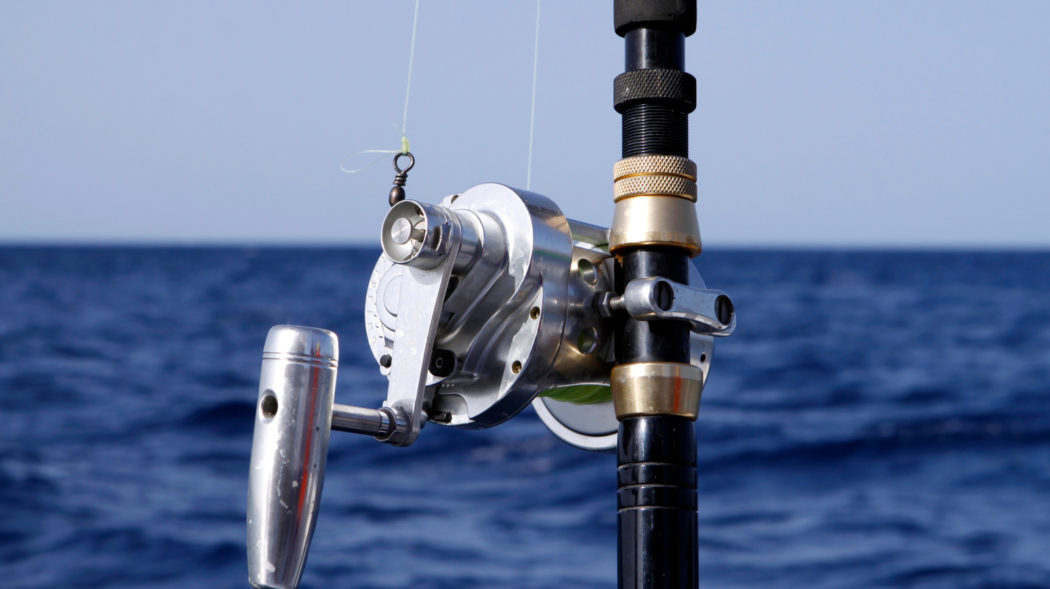
Casting Reels
Casting reels, or baitcasters, are reels for the angler looking for control. Ironically these reels are more difficult to control, but if learned to cast correctly, the payoff is a reel and rod combination that will get your lure exactly where you want it, how you want it.
Many anglers use baitcasters for Bass fishing specifically because they are easy to handle, light, cast precisely and give the fisherman unmatched line control. A well-versed baitcasting angler can sink a lure in front of a fish without a splash.
An added benefit of a baitcaster is versatility. They aren’t your do anything reels like spinners, but many are made sturdy enough to move from the lake to the offshore deep salt without blinking an eye.
Spincasting Reels
Little enclosed spincasters are a lot of guys’ first reels. That’s because they are simple. Spincasters were designed back in the ’40s precisely to make fishing simple, and that simple design has stood the test of time. It’s no coincidence that one of the most popular spincasters on the market today is the Zebco Bullet, as many of these reels are bulletproof.
Now, when fishing a baitcaster or spinning reel, there are often multiple things happening to get the lure to the fish. These more complicated reels and tactics can often leave an angler scratching their head or pulling out their fishing knife to cut through backlash or a birdsnest.
When fishing a spincaster, the only thing pulling the line is the lure. That has the obvious advantage of simplicity and the obvious disadvantage of casting power and distance.
The spincaster won’t win any long-distance casting records. The enclosed design, though, and simple casting make it the perfect reel for beginning anglers or anyone looking to keep things simple. I often think of a spincaster as the perfect after-work dock rod.
How to choose the best fishing reel
When looking at fishing reels across the board, from fly reels to spincasters, you’ll want to consider a few things.
Basic Application
The first and probably most important thing to consider when picking a reel is its primary application. Bringing a fly rod to a busy dock looking for Crappie isn’t gonna be the best option. Looking for a bit of peace and quiet on a river and as concerned with the process as the catch… Maybe you don’t want to bring a saltwater spinning reel and heavy rod… You get the point.
There is a right rod and reel setup for every application, and a lot of that depends on the angler. So there is nothing set in stone here. To keep it simple, though, I like to think of my fly reel and rod as my small to medium river setup. I think of my baitcaster as my lake reel and rod setup. My spincaster I think of as my dock and panfish reel and rod combo, and my spinning reel and rod as my do literally everything setup.
Now, of course, most of these reels and rods can do it all. A lot of that depends on the size of the setup and how you change it, and the angler’s desired outcome and abilities.
Remember, the only thing constant, even in fishing, is change. Being adaptable and willing to try anything and everything can be the difference between catching fish or not and having a good time or not.
Line Capacity
Line capacity for all reel types is going to depend on species and location. All reel types and multiple designs within that type will have different line capacities, however.
Fishing a shallow dock for panfish? A spincaster usually has less line capacity but is excellent at presenting light lures.
Fishing salt? Spinning reels, baitcasting reels, and fly reels all have a very wide range of line capacity.
Remember, though, when looking at line capacity, that more isn’t always better. A new trend in reel designs, especially in fly reels designs, is large arbor reels. These reels are designed to hold more line than ever and keep the line memory down. Don’t forget, though; more line means more weight. A balanced rod and reel is one you’ll feel comfortable using all day.
Weight/Size
As mentioned above, it’s common for anglers to think that bigger is always better when looking at reel weight and size. Although some more expensive large arbor reels for fly fishing can be lighter and offer less line memory, I’m here to tell you in other applications to reconsider.
Now, if you’re deep dropping for swordfish and need to get down 1200 ft, it’s important to make sure you have a reel that can handle that much line (and one that’s probably electric), but if you’re fishing for bass in your local lake consider this. Would a lighter, smaller reel with braided line do just as well as a bigger reel? You want to fish all day and, in a lot of cases, have a nimble, easy-to-use setup.
Remember, most manufacturers offer the same reel models in various sizes. When picking a size, I like to think of the type of species I’ll be targeting with a reel and rod and try to get away with the smallest reel possible. I do like to keep in mind accidental hookups, though.
Drag System
One of the most important aspects of any reel type is its drag system. Even if you’re hand landing fish with a small fly rod, you’ll want a drag system that can handle the occasional big fish. so consider the size of fish you’ll generally be targeting with your reel and rod setup, as well as the size fish you might luckily hook into.
A good rule of thumb when actually fishing and setting your drag is to keep it at about one-third of the breaking strength of your line. For example, if you’re running 15 pound braided on a baitcasting reel, that means your drag should be set at about five pounds. Running three-pound mono? You got it. Your drag should be set at 1 pound.
Even most small or inexpensive reels of all types will have a drag rating of about 10 pounds. So if you’re doing the math here, even if you’re catching lunkers, finding a good drag-rated reel for fishing shouldn’t be too much of a problem.
Looking for a hot tip? Consider sound when purchasing your drag as well. Some guys love the clicking sound of their reel working; others will prefer a smooth, silent application.
Material
Fishing reel bodies are generally made of aluminum or another metal, graphite, plastic, or a combination of two of these or all three. This is why you need to lubricate your fishing reel using gun oil or other lubricants.
As one would expect, aluminum or metal wins in the strength department and is generally more rigid. Because of this, most high-end reels come housed in aluminum or a combination of aluminum and other material. The best of these reels are machined, and the less expensive are cast or made from metal molds.
When considering a reel, remember that although more durable, aluminum or other metal is generally also heavier than its graphite or plastic counterpart. If weight is a significant consideration, you may opt for a less expensive lighter material or a more expensive light metal.
In addition to being generally lighter, graphite and plastic are also naturally corrosion resistant. So, if you are looking for the best bass fishing reel which you’ll occasionally take to the salt, graphite is your best bet.
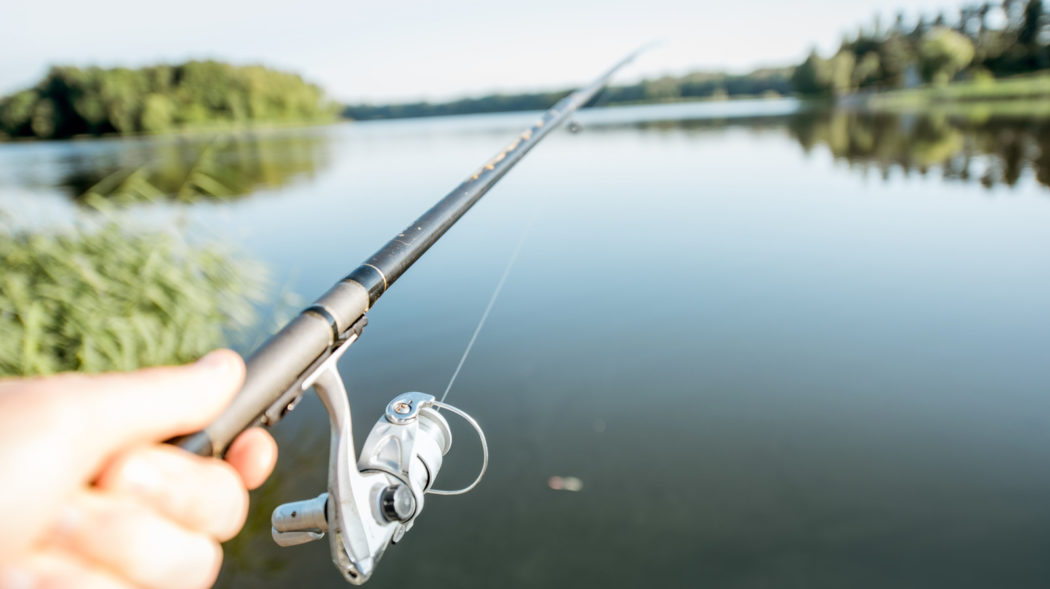
Bearings
Generally speaking, I like to think the more bearings in a reel, the better. Most spinning reels will come with between 2 to 10 bearings. More bearings generally mean a smoother, more predictable reel.
However, keep in mind that more bearings of lower quality or in a reel of lower quality material may not mean a smoother setup. So, if you’re looking for a smooth reel day in and day out, look for a reel with good construction and a high number of high-quality bearings.
Price
Of course, when considering any type of reel purchase, you’ll want to take into account the price. Price ultimately comes down to the quality of the reel, type of reel, and application.
Make sure to consider the quality if you’re looking for a reel to use day in and out year after year. A high-quality machined metal reel with shielded bearings may run you more, but you’ll get a predictable reel you can count on.
Price will also come into account when looking at various types of reels and their applications.
If you’re dock fishing for panfish, you may be able to get away with a less expensive spincaster. If you’re swinging wet flys for steelhead, you’ll, of course need a bigger, more well-designed fly reel. It’ll cost you more, but when you land a wild summer run that had your line screaming, I can guarantee the price of the reel will be the last thing on your mind.
Conclusion
There is no doubt a correct reel for every fishing job. As a recently married generalist fisherman, I do my best with what I have and am lucky enough to have acquired a variety of reels and rods and combinations of both over the years.
Even so, often enough on a river or lake, I’ll see a guy with a reel I don’t have catching monster fish I am not and think, man, maybe it’s the reel.
Maybe I’m a fool staring at apparently empty water in front of me and thinking about reels… but I do know enough to know that when you do get a fish on, the right reel helps.
As an Amazon Associate, Fishermen's Angle earns from qualifying purchases. We get commissions for purchases made through links in this post.
